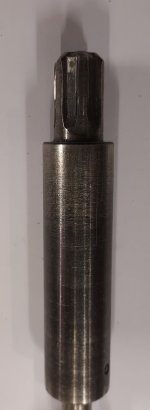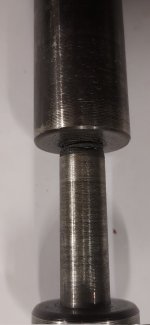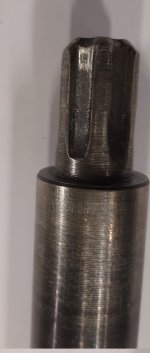More problems with an old Dyna Mechtronics EM-3116 mill. The mill can be described as a Bridgeport knee-mill clone with CNC including an air powered drawbar. Seemingly runs R8 collet and the drawbar has threads at the bottom.
The tool holder (or collet) falls from the spindle during operation. It does not fall all the way to the table or ground, but remains in the spindle loosely. What is the most likely mode of failure? Belleville washers, ball bearings or the drawbar?
As next step, the spindle should be removed to have a closer look. I have not done so before so it is not clear what kind of mechanism is in place (the documentation is useless). Is the spindle removed by moving it all the way up to the point of error and then hammering it down from above where the top of the draw bar is (with or without the drawbar in place?)?
Previously, the tool refused to tighten up properly, the drawbar was pulled out and oiled, and the air pressure cabling was changed which fixed the issue. The collet alignment screw was also changed.
The tool holder (or collet) falls from the spindle during operation. It does not fall all the way to the table or ground, but remains in the spindle loosely. What is the most likely mode of failure? Belleville washers, ball bearings or the drawbar?
As next step, the spindle should be removed to have a closer look. I have not done so before so it is not clear what kind of mechanism is in place (the documentation is useless). Is the spindle removed by moving it all the way up to the point of error and then hammering it down from above where the top of the draw bar is (with or without the drawbar in place?)?
Previously, the tool refused to tighten up properly, the drawbar was pulled out and oiled, and the air pressure cabling was changed which fixed the issue. The collet alignment screw was also changed.












